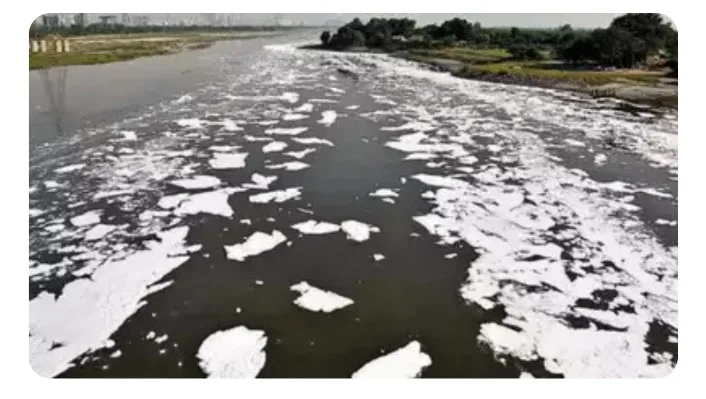In a concerning development, the ammonia levels in the Yamuna river surpassed manageable limits once again, adversely impacting water treatment at the Wazirabad and Chandrawal plants. The Delhi Jal Board (DJB), responsible for supplying potable water in Delhi, faces challenges in treating the raw water due to the heightened ammonia levels, impacting the city’s drinking water supply.
This year, DJB has encountered several instances of elevated ammonia levels in the Yamuna. The increased ammonia indicates a significant influx of untreated industrial chemicals and sewage into the river, disrupting the raw water supply chain essential for the city’s drinking water treatment capacity.
The current crisis has led to a reduction in water supply to areas including NDMC areas, Kalkaji, South Extension, Greater Kailash, Model Town, Karol Bagh, Patel Nagar, Moolchand, and parts of Delhi Cantonment.
DJB depends on raw water from the Yamuna, passing through Haryana before entering Delhi. The water treatment plants (WTPs) designed by DJB are unable to treat raw water containing more than 1ppm ammonia, resulting in a decreased supply of drinking water during such situations.
In March, the Delhi government announced plans to construct an ammonia treatment plant to address this recurring issue. Chief Minister Arvind Kejriwal instructed officials to set up the plant within six months during a high-level meeting. The project is currently under detailed planning, with adjustments made to the initial proposal.
The discharge of ammonia and industrial wastewater into the Yamuna by Haryana has been identified as a primary cause of the crisis. DJB alleges that its monitoring team found the mixing of raw drain water into the river through two drains in Haryana, directly contributing to the rise in ammonia levels. Industrial pollution in Haryana, particularly from units in Sonipat, Panipat, and Rohtak, has also been blamed for the increased ammonia levels in Delhi.
To manage high ammonia levels in water treatment plants, a process involves diverting clean water from other plants to dilute and reduce pollution levels to treatable limits. In November, the new water minister, Atishi, proposed an in situ treatment to reduce ammonia levels in the Wazirabad reservoir, allowing the plants to remain operational even during elevated ammonia situations.







